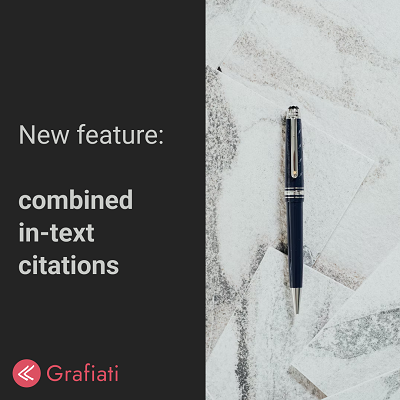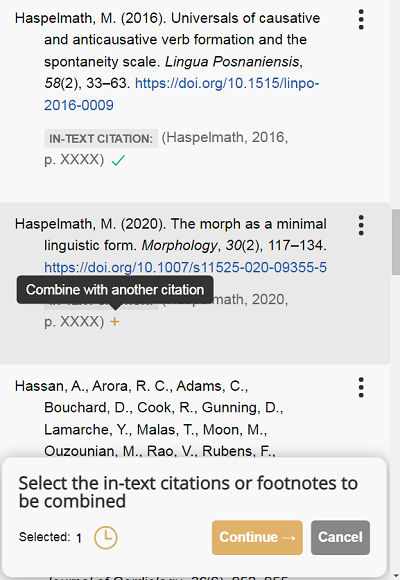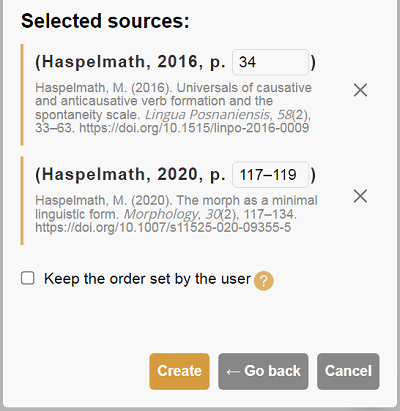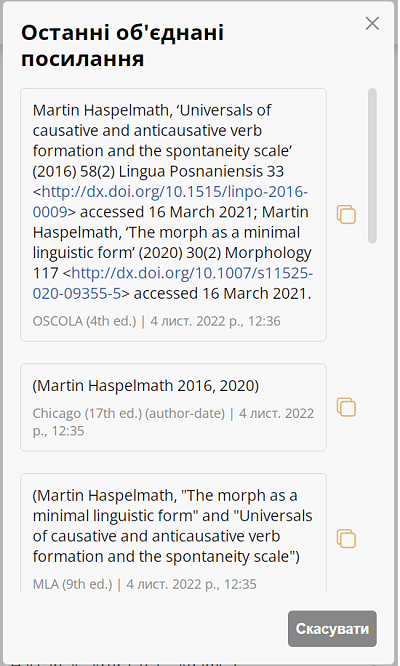Today we are launching our new great feature: the automated generation of combined in-text citations for multiple sources.
 Often, in order to support an assertion presented in your research, you need to cite several sources instead of just one. Every time, you might have doubts regarding how this should be done: whether the authors’ names should be given twice, which punctuation mark to use for separating two sources, whether to put the parentheses around the entire citation or around each of its elements, etc.
Often, in order to support an assertion presented in your research, you need to cite several sources instead of just one. Every time, you might have doubts regarding how this should be done: whether the authors’ names should be given twice, which punctuation mark to use for separating two sources, whether to put the parentheses around the entire citation or around each of its elements, etc.
There is no single way to do it: each citation style has its own specific requirements for citing several sources in one place. Here is just one example of an in-text citation for the same two sources in different citation styles:
| Citation style | In-text citation |
| APA (7th ed.) | (Haspelmath, 2016, 2020) |
| Chicago (17th ed.) (author-date) | (Haspelmath 2016, 2020) |
| MLA (9th ed.) | (Haspelmath, "The Morph as a Minimal Linguistic Form" and "Universals of Causative and Anticausative Verb Formation and the Spontaneity Scale") |
| OSCOLA (4th ed.) | Martin Haspelmath, ‘Universals of Causative and Anticausative Verb Formation and the Spontaneity Scale’ (2016) 58(2) Lingua Posnaniensis 33 <http://dx.doi.org/10.1515/linpo-2016-0009> accessed 16 March 2021; Martin Haspelmath, ‘The Morph as a Minimal Linguistic Form’ (2020) 30(2) Morphology 117 <http://dx.doi.org/10.1007/s11525-020-09355-5> accessed 16 March 2021. |
| Vancouver | (6,7) |
| IEEE | [6], [7] |
Bear in mind that each citation style might require a different order of sources inside a combined citation: by alphabet, date of publication, type of source, and so on. Everything gets even more complicated when you are referring to particular pages: the punctuation might change, you might need to abbreviate the designation of the page range (e.g. ‘148–9’ instead of ‘148–149’), etc.
From now on, Grafiati allows doing all this work automatically: you just need to choose the sources you would like to cite, enter the pages (whenever relevant), and we will generate a combined in-text citation in accordance with the requirements of the chosen citation style.
Next to the generated in-text citation for every source in your bibliography, there is a ‘plus’ sign. Click on it, and you will be able to select the sources to include in a combined in-text citation.


For your convenience, we allow keeping the order of sources set by the user. Thanks to this feature, you can order the sources in the combined citation based on their importance or relevance within the framework of your arguments, instead of sticking to the order prescribed by the citation style. To change the order of sources, drag them with your mouse.
Also, by clicking on the ‘clock’ icon when creating a combined in-text citation on our homepage, you will be able to browse the 10 latest combined in-text citations that you generated.
 Have a good time using our service!
Have a good time using our service!







